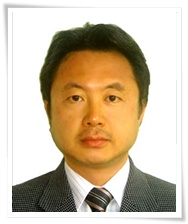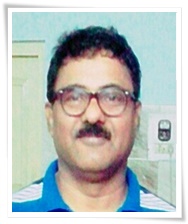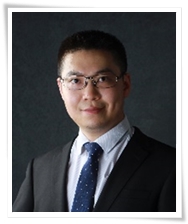KEYNOTE SPEAKERS | PLENARY SPEAKERS | INVITED SPEAKERS | INDUSTRIAL TALK
 |
PROF. DR. KLAUS FRIEDRICH
Sliding Wear Performance of Dry and Oil Impregnated Black-Fiber Palm Wood The sliding wear of black-fiber palm wood was first investigated under dry conditions against smooth steel. Tests were carried out in two different configurations, i.e. pin on disc and ring on plate. In both cases, the transverse, in plane fiber orientation resulted in the highest values of friction coefficient and specific wear rate. The normal and parallel fiber orientations showed a better performance. In all cases, the coefficient of friction was rather high (average range between 0.4 to 0.7) whereas the specific wear rates varied between 10-6 to 10-5 mm3/Nm. The latter are comparable to those of short fiber reinforced thermoplastics. A following impregnation in various oils reduced the wear rates, and the friction coefficients went down to values between 0.1 and 0.3. The different efficiency of the various oils was discussed. |
|
|
PROF. DR. HYUNG-KYU KIM Hyung-Kyu Kim is a principal researcher of Korea Atomic Energy Research Institute in the field of the mechanical design and failure analysis of nuclear fuels for 32 years. He is also a professor of University of Science and Technology (Nuclear and Radiation Safety), and an adjunct professor of the School of Mechanical Engineering in Chungnam National University. He received the PhD degree from Korea Advanced Institute of Science and Technology (Mechanical Engineering) in 1997. He was a visiting scholar of the Dept. Engineering Science, Oxford University, UK in 1997 and 2012 where a two-dimensional contact shear and a complete contact problem were studied with the Solid Mechanics Group in the Dept. His research fields are Contact Mechanics, Tribology, Fracture Mechanics, Fatigue Fracture, and Failure Analysis.
Conditions for Assuming a Conformal Contact to be Non-Conformal A transition
condition from a conformal contact to a non-conformal
contact is studied. A cylinder-hole and the Hertz contacts
are considered as a conformal and a non-conformal contact,
respectively. First, the theory of the contact between a
cylinder and a hole is revisited. The peak traction of it is
compared with the Hertzian peak. In the case of the
elastically similar materials’ contact, the non-conformal
contact can be assumed until the angle of contact reaches
almost 38% of the maximum possible angle of contact if the
difference in the traction peaks of the conformal and
non-conformal conatcts is set as 5%. |
|
|
DR. PRASANTA KUMAR PADHI Prasanta Kumar Padhi graduated in “Mechanical Engineering”, followed by post graduation in “Production Engineering” and earned his Ph.D. degree on the subject of “Tribo-performance Analysis of Blast Furnace Slag reinforced Polymer Composite” at National Institute of Technology, Odisha in India. He is presently working as Deputy General Manager in one of the leading steel industry i.e. M/s Steel Authority of India Limited, a Government of India enterprises and operating from senior chair of Plant Works Centre of Production,Panning and Control of Rourkela Steel Plant. He has engaged in active research in the area of composite materials since 2009 and has contributed 07 research papers to his credit which have been published in various national and international journals of repute. He has also presented 15 research papers in the area of composites and optimization techniques at various national and international conferences.He also serves as a senior faculty of Art of Living, an NGO based world renowned organisation founded by SRI SRI Ravi Shankar and teaches yoga and meditation.
Tribo-Performance Analysis of Blast Furnace Slag Reinforced Polymer Composite: An Innovative Polymer Composite Research Work from Steel Sector Blast furnace slag (BFSlag) is an industrial waste which is generated in huge quantities during iron making in steel industries. The present work attempts to utilize this solid waste BFSlag as the filler material in composite making with polymers like epoxy. The composites are characterized in regard to their physical and mechanical properties. An attempt has been made to improve the wear resistance of short glass fiber (SGF) reinforced epoxy composites by incorporation of micro-sized blast furnace slag (BFS) particles. A wealth of property data has been generated for a series of BFS filled epoxy/glass-epoxy. These material properties have been determined by conducting physical and mechanical tests under controlled laboratory conditions. Taguchi’s experimental design approach integrated with neural computation has been followed for the parametric appraisal and prediction of the wear processes. The morphology of worn-out surfaces is then examined by scanning electron microscopy (SEM) and possible wear mechanisms are discussed. This study reveals that addition of blast furnace slag improves the fracture resistance of short glass-Epoxy composites significantly and thus makes them suitable for tribological applications. |
|
|
DR. JINJIN LI Jinjin Li received the BS degree in mechanical engineering from University of Science and Technology of China in 2009, and the PhD degree in mechanical engineering from Tsinghua University, China in 2014. Li is currently an assistant professor at Tsinghua University, China. His major research areas include solid and liquid superlubricity, nanotribology and friction theory. He has published more than 30 papers on the international journals of Advanced Science, Journal of Physical Chemistry Letters, Carbon, and so on (24 papers as the first author). He has been awarded the 4th Hiwin award for outstanding doctoral dissertation, first prize for outstanding doctoral dissertation in Tsinghua University, and outstanding postdoctor in Tsinghua University.
Superlubricity Behavior of Surfactant Micelles at the Nanoscale Attaching appropriate molecular layers on the two sliding surfaces is one of the most effective methods to achieve liquid superlubricity at the nanoscale. In this paper, the recent advances in the nanoscale superlubricity achieved by using surfactant micelles in our group was reviewed and discussed. First, the superlubricity conditions for surfactant micelles is established by using atomic force microscopy (AFM), which are the adsorption of surfactant micelles on the two friction surfaces and the formation of the hydration on the exposed headgroups. Second, the nonlinear behavior of dissipation of frictional energy in the superlubricity regime of surfactant micelles is observed and discussed, which is attributed to the elastic deformation of the adsorbed surfactant micelle layer. Third, the fluorinated cationic surfactant micelle layer exhibits the self-recovery behavior after a rupture caused by high normal pressure, and the difference between the rupture and recovery pressures leads to the hysteresis of friction force. Fourth, the superlubricity of layered materials is achieved through attaching sodium dodecyl sulfate micelles on the friction surfaces, which is attributed to the extremely low shear strength between the carbon chain and layered materials. Finally, the problems and future on the superlubricity of surfactant micelles at the nanoscale are discussed. |
| ASIATRIB2018 | All Right Reserved |





